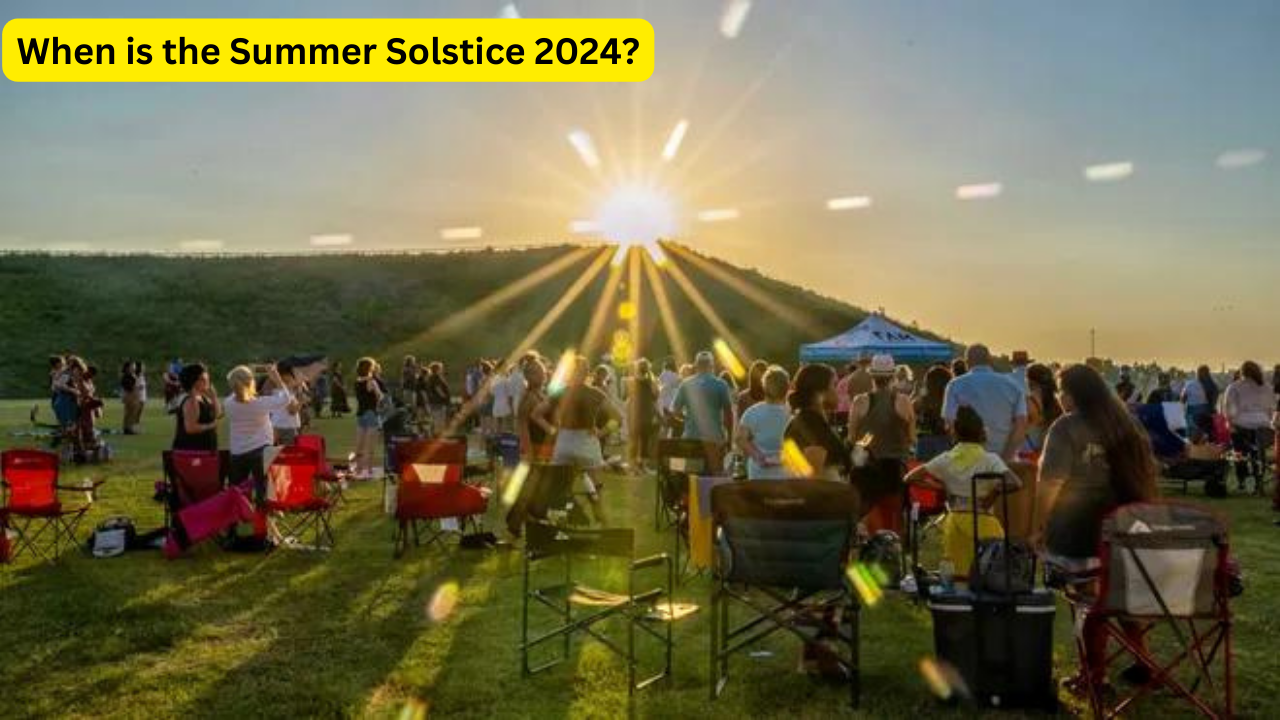The summer solstice, a celestial event that marks the onset of summer in the Northern Hemisphere, is an occasion of significant astronomical and cultural importance. For those keen on tracking the cycles of nature or planning their seasonal activities, understanding the timing and significance of the summer solstice is crucial. In 2024, the summer solstice will occur on June 20th. Let us delve into the details of this phenomenon, its implications, and how it is celebrated around the world.
Understanding the Summer Solstice
The summer solstice, known as Midsummer, occurs when one of Earth’s poles has its maximum tilt toward the Sun. It happens twice yearly, once in each hemisphere. For the Northern Hemisphere, it usually falls between June 20th and 22nd. During this time, the Sun reaches its highest position in the sky and is directly over the Tropic of Cancer at noon. This results in the longest day and shortest night of the year.
Astronomical Significance
On June 20, 2024, at precisely 10:51 PM UTC, the Northern Hemisphere will experience its summer solstice. This precise moment is when the Earth’s axial tilt is most inclined towards the Sun, making it the longest day of the year in terms of daylight hours. After this date, the days will gradually become shorter as we move towards the autumnal equinox.
Cultural and Historical Significance
Throughout history, the summer solstice has been a time of celebration and rituals in many cultures. Ancient civilizations constructed monuments like Stonehenge and Newgrange, aligning them with the solstice sunrise or sunset, underscoring its importance.
- Stonehenge: In England, thousands gather at Stonehenge to witness the sunrise on the summer solstice. The stones are perfectly aligned with the sunrise, creating a stunning visual phenomenon that has been celebrated for millennia.
- Newgrange: In Ireland, the prehistoric monument of Newgrange is another solstice marvel. Although more famously aligned with the winter solstice, it also has connections to the summer event.
Modern Celebrations
Today, the summer solstice is celebrated worldwide in various ways, from traditional ceremonies to modern festivals.
- Scandinavia: In Sweden, Midsummer is one of the most important holidays. Festivities include dancing around the maypole, wearing flower crowns, and enjoying traditional foods.
- North America: In the United States and Canada, summer solstice celebrations range from music festivals to yoga events, reflecting a blend of ancient traditions and contemporary culture.
- Asia: In China, the summer solstice is part of the Dragon Boat Festival, featuring boat races, traditional foods, and rituals honoring historical figures.
The Science Behind the Solstice
The Earth orbits the Sun at an angle of approximately 23.5 degrees. This tilt is responsible for the changing seasons. As the Earth travels along its orbit, different parts of the Earth receive varying amounts of sunlight.
During the summer solstice, the North Pole is tilted closest to the Sun. This means that the Sun’s path across the sky is at its highest and longest, resulting in extended daylight hours. Conversely, the South Pole experiences the winter solstice at this time, with the shortest day and longest night of the year.
Implications for Climate and Agriculture
The summer solstice is not just a cultural landmark but also an important period for agriculture and climate patterns. The increased daylight hours contribute to higher temperatures and more sunlight, crucial for the growth of many crops. Farmers traditionally used the solstice as a marker for planting and harvesting cycles.
Astrological Impact
In astrology, the summer solstice marks the beginning of the Cancer season. It is a time often associated with emotions, family, and home. Many believe that the energy of the solstice can influence personal growth and introspection, making it a period for setting intentions and embarking on new beginnings.
How to Celebrate the Summer Solstice 2024
There are numerous ways to honor the summer solstice, whether through personal reflection or communal festivities.
- Sunrise Watching: Wake up early to watch the sunrise. Many people find it a profound way to connect with nature and mark the changing seasons.
- Nature Walks: Spend time outdoors, soaking up the extended daylight. Hiking, picnicking, or even a simple walk in the park can be enriching.
- Cultural Events: Participate in local festivals or cultural events. Many communities host special activities on this day, celebrating with music, dance, and food.
- Meditation and Yoga: Some prefer to use the solstice as a time for meditation and yoga, aligning their inner rhythms with the natural world.
Conclusion
The summer solstice of 2024, occurring on June 20th, is more than just an astronomical event. It is a day steeped in history, culture, and science. Whether through ancient rituals or modern celebrations, the solstice continues to be a significant time for reflection and festivity. Mark your calendars and prepare to embrace the longest day of the year with a sense of wonder and appreciation for the natural world.
